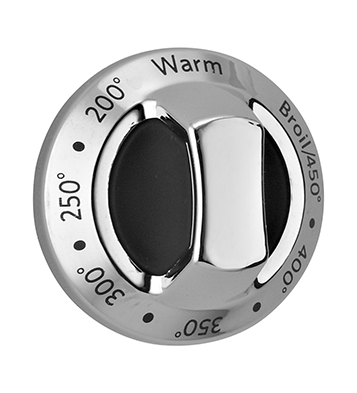Elite Restaurant Equipment / Restaurant Equipment / All Commercial Ovens / Buying a Convection Oven
Buying a Convection Oven for Your Restaurant
Convection ovens can take your restaurant’s kitchen to another level of efficiency. With the potential for decreased cooking times and more consistent results, a convection oven might even be considered a kitchen game-changer.
Working with restaurant owners and managers, we know what some of the most common questions around ovens are. We get a chance to address those questions here in our guide to buying a convection oven for your restaurant.
Frequently Asked Questions about Ovens:
- What is the difference between a regular oven and a convection oven?
- What is a convection oven?
- Which convection oven is best for my business?
- What is the best convection oven?
- What are the benefits to stacking convection ovens?
- Is purchasing a convection oven worth it?
To the last question, the short answer is yes! Here’s what you need to know.
Radiant Heat and Convection Ovens- What’s the Difference?
While standard radiant ovens are most commonly used in homes, it is important for restaurants to invest in convection ovens to increase yield, and decrease cooking times.
Here’s a quick explanation of the difference.
Radiant oven refers to the fact that food is heated by radiation -- from walls and heating elements inside of the oven.
Radiant heating alone is usually less consistent and less efficient than convection ovens. Without fans creating an even and consistent temperature, ovens may burn certain parts of food while undercooking others, creating additional, unnecessary quality control issues in restaurant settings.
Convection ovens also heat by radiation and heating elements with the addition of fans to help circulate hot air, decreasing cook times. Convection ovens are available in gas and electric models. No matter if you choose gas or electric, there must be an electrical outlet close to power the fans.
The circulation of hot air not only decreases cook times, but also creates an even temperature inside of the oven cooking all surfaces with equal heat. Other benefits of using a convection oven include:
- Can cook all of the same things as a radiant oven, more efficiently
- Higher yield from certain dishes
- Retains moisture when needed
Where Will Your Oven Be Used?
While various sizes of convection ovens affect yield, a smaller convection oven still packs power, while saving space. Convection ovens are available in multiple sizes:
- Countertop oven
- Full-size oven
- Half-size oven
Countertop convection ovens come in a variety of sizes and models. Countertop versions are best used for limited spaces such as:
- Concession operations
- Off-site catering
- Convenience stores
- Quick-serve stations
Floor models are also available in full-size and half-size in order to easily accommodate large, or small spaces.
Floor convection ovens come with variety of accommodations, including:
- Bakery or deep depth (more space for baking sheets at different orientations)
- Roasting capabilities, or “cook and hold” options
- Floor and countertop options are capable of cooking, roasting, re-heating, and baking capabilities
What are the benefits to stacking convection ovens? If your floor plan allows, stacking convection ovens may be the best option for your business, and multiple ovens will obviously increase your yield.
When you’re working with a small area and still want the convenience and power of a convection oven, you’ll find half-size stacked ovens with castors could be everything you’re looking for and more.
Gas Ovens and Electric Ovens
The gas versus electric debate is ongoing. There are great benefits to both gas and electric options but it is important to consider space and long-term value.
Gas convection ovens often come with additional costs related to installation but gas is oftentimes less expensive than electricity. The up-front installation costs may be worth it considering the long-term savings.
Countertop convection ovens require electricity, but half-size and full-size options are more versatile when it comes to gas or electric varieties.
It is important to keep in mind that all convection ovens require electricity to keep fans operating.
View DetailsWhat Are Oven Heating Options?
While all convection ovens are heated by fans, some convection ovens are equipped with one fan while others are equipped with multiple fans.
Furthermore, it is important to consider the temperature ranges needed to bake your menu items. Some ovens only heat to 500° while other max out at 550°.
Minimum temperatures can range from 140° to 200°.
Convection Oven Cooking Tips
- Reduce the temperature by 25°. Because of the convection oven specific heating system, high temperatures can be slightly reduced. With temperature reductions, cooking results will likely be comparable or better.
- Reduce cooking time by 25%. While 25% might not be perfect for your recipe it important to take your convection oven on a trial run. The fan heating changes the game and while cooking times are reduced, it is important to find the sweet spot for your recipes.
- Keep an eye on the batch size. Batch size directly affects bake time (see tip above).
- Use baking sheets with low sides. Pans with lower sides allow for better air circulation, increasing cooking efficiency.
- Lower fan speeds. When baking goods like souffles or muffins, lower fan speeds, or pulsing fan settings are much gentler on these delicacies.
















































